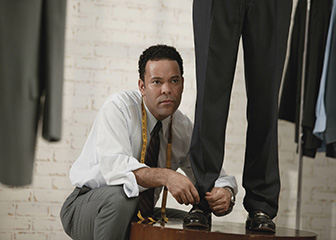Summary

| Quick Facts: Sewers and Tailors | |
|---|---|
|
$25,850 per year
$12.43 per hour |
|
| Less than high school | |
| None | |
| Moderate-term on-the-job training | |
| 57,500 | |
| 1% (Little or no change) | |
| 400 | |
What Sewers and Tailors Do
Sewers and tailors sew, join, reinforce, or finish clothing or other items. They may create new pieces of clothing from patterns and designs or alter existing garments to fit customers better.
Work Environment
Sewers and tailors work for textile and apparel manufacturers, department stores, and drycleaners. Many are self-employed.
How to Become a Sewer or Tailor
There are no formal education requirements for someone to work as a sewer or tailor. Most workers are trained informally on the job or through apprenticeship programs. Some take classes to learn how to sew and alter clothing.
Pay
The median hourly wage of hand sewers was $11.13 in May 2010. The median hourly wage of tailors, dressmakers, and custom sewers was $12.77 in May 2010.
Job Outlook
Employment of sewers and tailors is expected to experience little or no change, growing 1 percent from 2010 to 2020. Growth will be limited as clothing continues to be made in other countries and the demand for custom clothing keeps declining. However, job prospects are good for skilled workers.
Similar Occupations
Compare the job duties, education, job growth, and pay of sewers and tailors with similar occupations.
O*NET
O*NET provides comprehensive information on key characteristics of workers and occupations.
Contacts for More Information
Learn more about sewers and tailors by contacting these additional resources.








